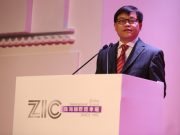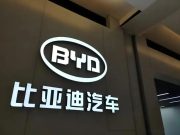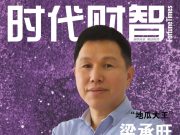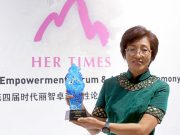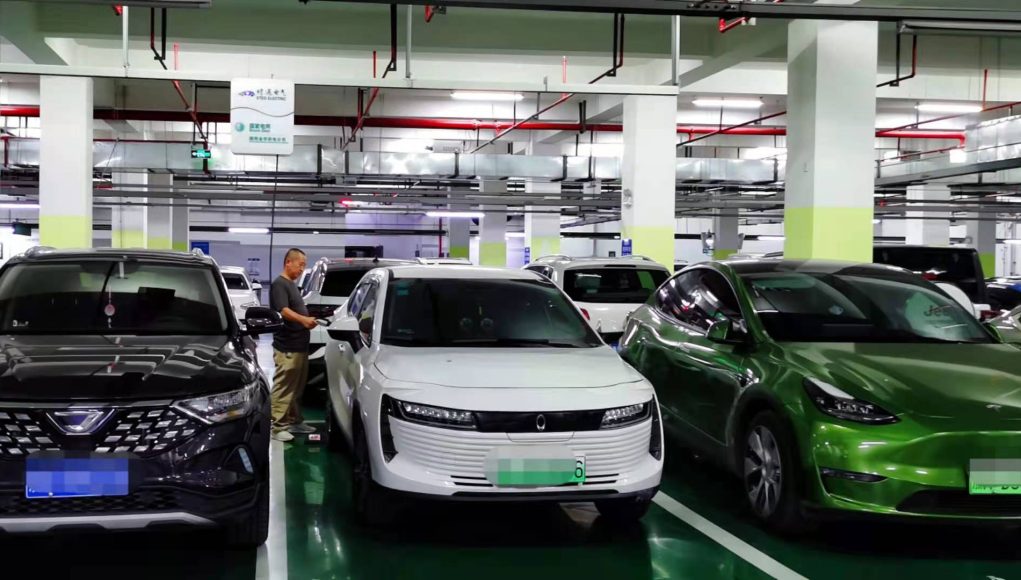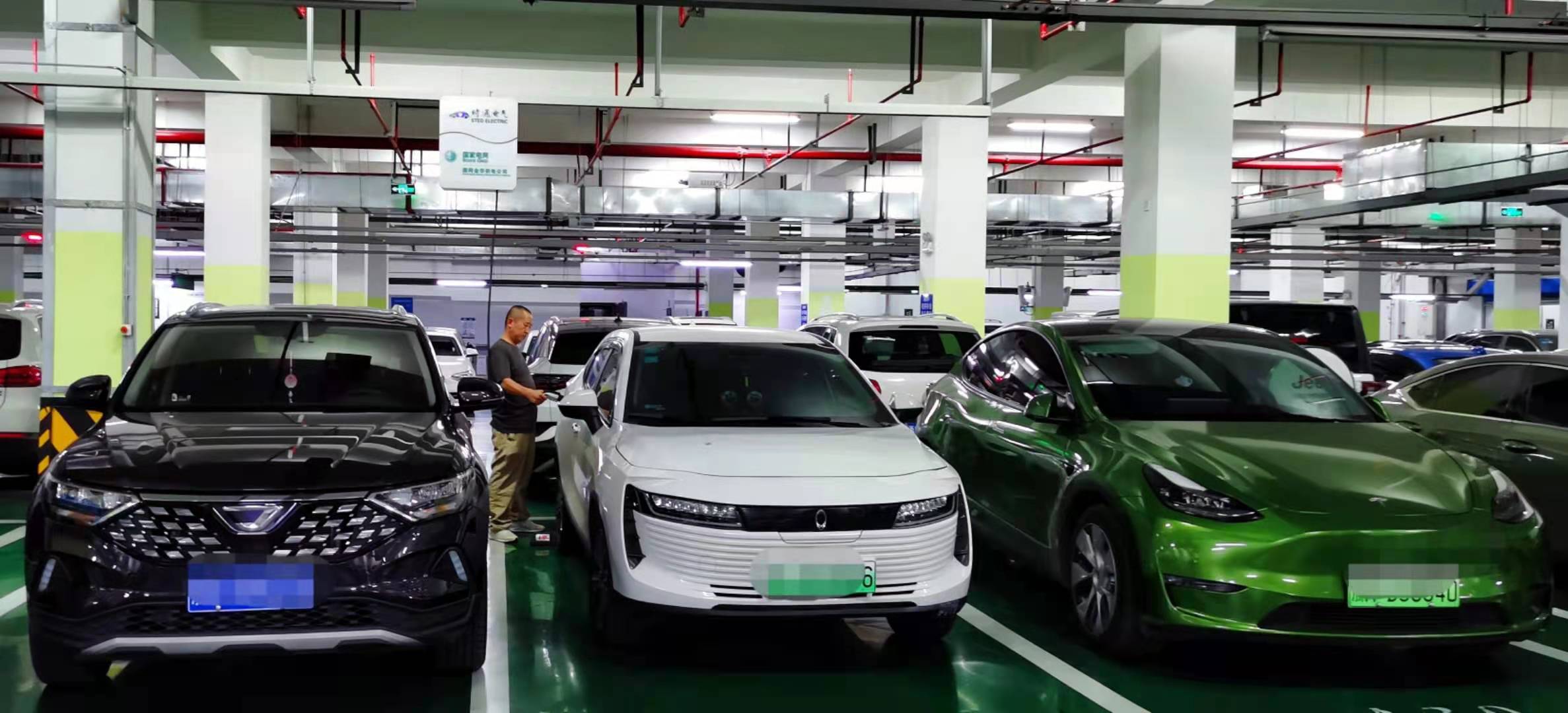 (Singapore, 14/08/2022) As the world’s largest market of new energy vehicles, China has achieved an unprecedented growth rate in the sales and ownership of new energy vehicles, with a record of cumulative sales of 2.466 million units and ownership over 10 million units through the first half of the year 2020. The contradiction between the increasing demand for charging and inadequate EV-charging infrastructure has become more and more prominent. It is extremely difficult to find a charging pile in the old neighborhoods. Seeing the fundamental needs of the people, the State Grid Jinhua Power Supply Company has accelerated the research and development of various new charging piles and taken multiple measures to tackle the charging problems for new energy vehicles.
(Singapore, 14/08/2022) As the world’s largest market of new energy vehicles, China has achieved an unprecedented growth rate in the sales and ownership of new energy vehicles, with a record of cumulative sales of 2.466 million units and ownership over 10 million units through the first half of the year 2020. The contradiction between the increasing demand for charging and inadequate EV-charging infrastructure has become more and more prominent. It is extremely difficult to find a charging pile in the old neighborhoods. Seeing the fundamental needs of the people, the State Grid Jinhua Power Supply Company has accelerated the research and development of various new charging piles and taken multiple measures to tackle the charging problems for new energy vehicles.
As one of the landmarks of Jinhua, Wanfo Pagoda is known as “the No. 1 pagoda in Zhejiang” with its exquisite Buddha statues, and it is a popular site attracting tourists from adjacent cities. In order to facilitate the new energy vehicle owners’ trip to this pagoda, the State Grid Jinhua Power Supply Company has installed newly-developed ceiling-mounted movable charging piles, smart mobile charging robots and mobile charging-and-storage machines in the pagoda site’s underground garage, which really impresses the tourists.
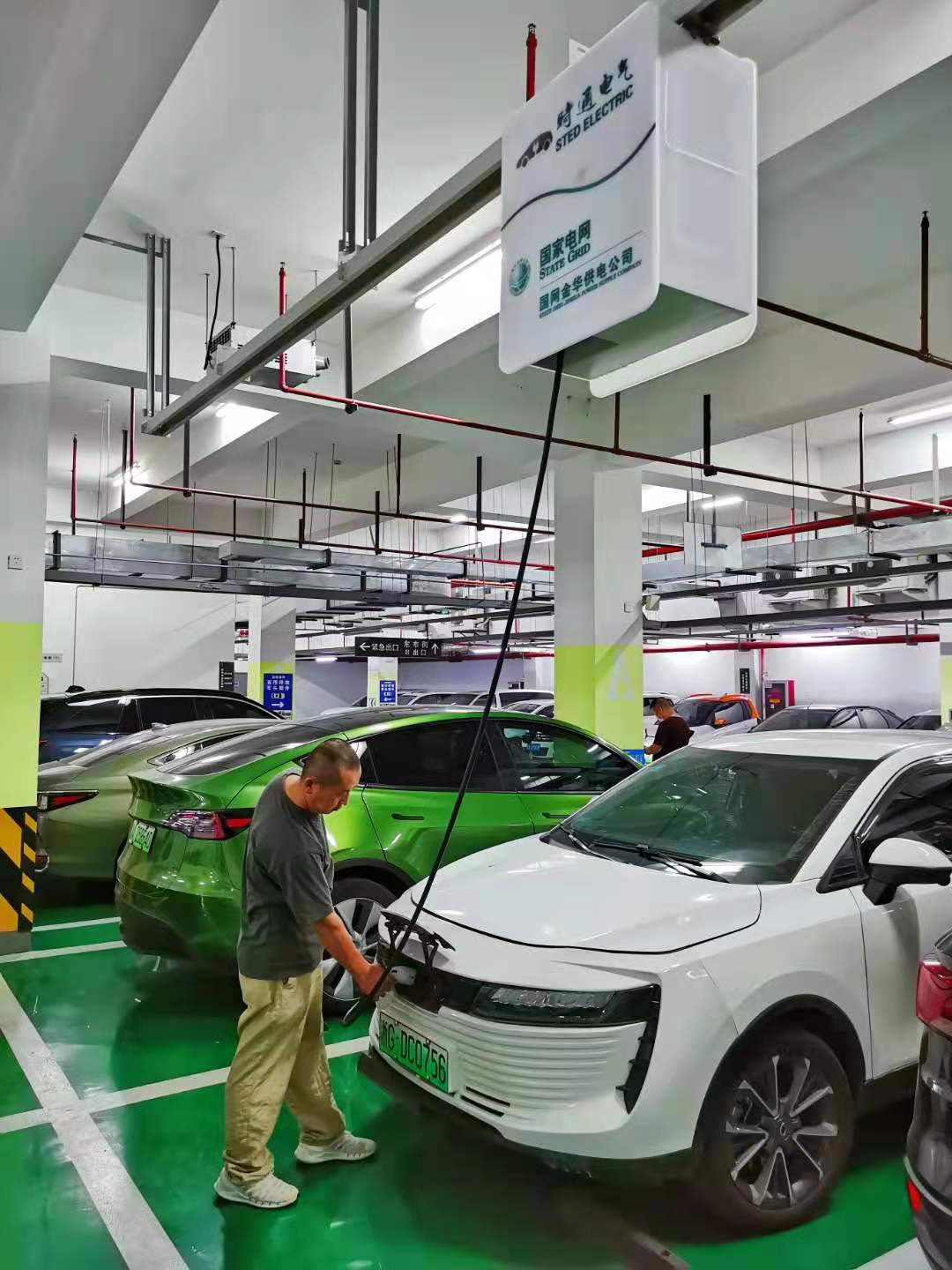
Compared with the conventional public charging stations, the “ceiling-mounted movable charging pile” changes the traditional layout of piles being fixed on the ground; instead, the piles are mounted on the ceiling or the side walls adjacent to the parking spaces, which takes up no ground space.
With the 0.1 m3 piles and a 10-meter track, it is sufficient to charge 10 cars in 10 neighboring parking spaces. New energy car owners only need to scan the QR codes for corresponding parking spaces with smart phones, and the system program will drive the charging piles through the track automatically to corresponding parking spaces, and the charging gun will automatically connect to the car, starting the charging process. When the new energy vehicle is fully charged, the charging gun will be automatically unplugged and the pile will automatically return.
The Company’s Shitong product development team has thus established a user-friendly, smart and convenient charging mode with cutting-edge technology, which realizes the functions of moving the piles by simply scanning QR codes, precisely positioning the piles, and automatic charging gun control. This effectively solves the problems in the installation of charging piles, space occupation by gasoline cars, and space occupation by fully-charged cars.
Another “magic equipment”– the smart mobile charging robot uses AI technology and sensor components to achieve functions such as automatic movement, obstacle avoidance and automatic return, electricity replenishment and energy storage after charging and transforming the mode of “car searching for pile” to “pile searching for car”.
The mobile charging-and-storage machine needs the car owners to pull the machine to the charging spot. As a fast-charging pile, its charging power is as high as 30 kW, which can provide fast power replenishment for new energy vehicles despite being larger in size.
The abovementioned three smart charging facilities have effectively resolved the problems of limited locations for chargers installation in the core business area and old neighborhoods, but there is still a prevailing problem of the shortage of power transformer capacity in old neighborhoods. To deal with this problem, the marketing service team of Wucheng Power Supply Branch of State Grid Jinhua Power Supply Company has conducted substantial research and innovatively proposed a flexible charging strategy for old neighborhoods based on the concept of “charging priority.” The team has started a pilot run at the charging station of Liuhu Future Community.
Liuhu Future Community is an old neighborhood with 2094 households, among which there are more than 200 new energy vehicle owners. Through coordination of all sides, fourteen charging piles have been installed in the community, including three 60 kW fast-charging piles and eleven 7 kW regular-charging piles. Meanwhile, the flexible charging strategy has been successfully applied an effect of intelligent digital control has been achieved. It is reported that vehicle owners can set “departure time from home” and “expectation of power level” in apps and then the system will “arrange” charging sequence and charging speed according to the client’s demands. Furthermore, the system will try to arrange the vehicles to be charged during off-peak hours, which will help to balance electricity consumption between peak and off-peak hours, alleviating the power pressure during peak hours when charging demands add to domestic electricity demands.
Moreover, the company is developing a fast-charging network “street-side convenient charging” and has built the first roadside charging station in Luojiatang of Wucheng District, making full use of the idle temporary roadside parking spaces to provide fast power-replenishment service for new energy vehicles. In addition, the service of this charging station covers many adjacent residential areas and urban villages, providing strong support for charging new energy vehicles in old neighborhoods that cannot be equipped with charging piles.
In recent years, the State Grid Jinhua Power Supply Company has been building a well-rounded charging service network, innovating and exploring new charging products, extending the boundary of traditional charging methods, striving to solve charging problems and striving to achieve the dual carbon goals.
Correspondent: LIN Feng



